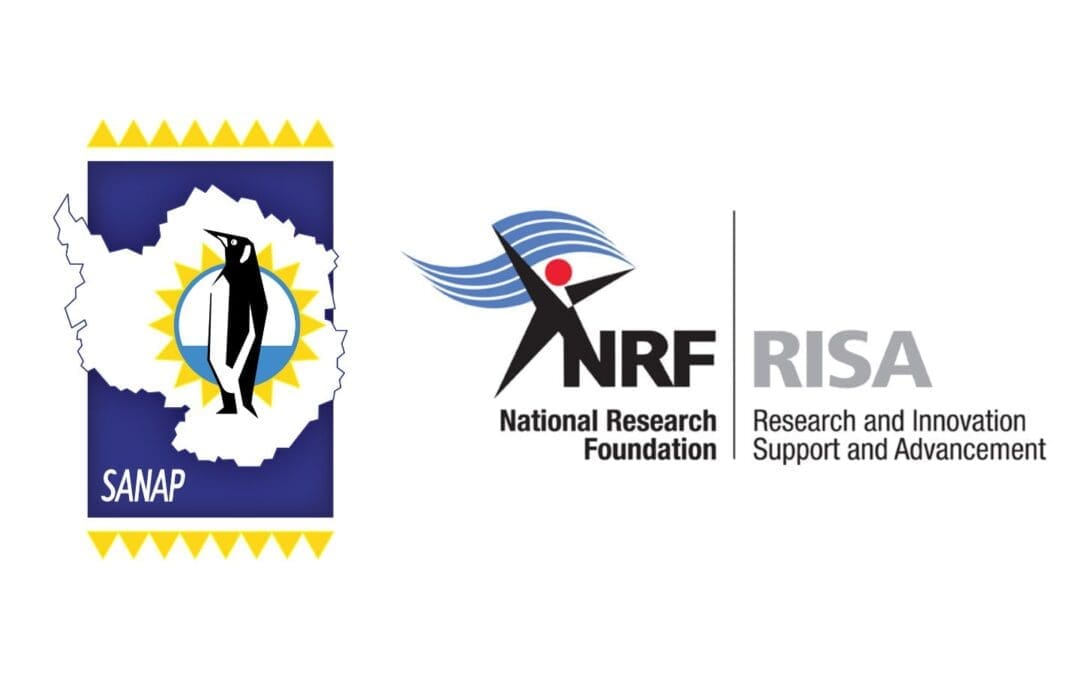
by Ria Olivier | Mar 8, 2021 | Announcement, Current Event, International Days, SANAP
 Today on International Women’s Day we are celebrating all those women involved within the South African National Antarctic Programme (SANAP). International Women’s Day is celebrated on 8 March of each year. 2021 Theme: “IWD 2021 campaign theme: #ChooseToChallenge; A challenged world is an alert world. Individually, we are all responsible for our own thoughts and actions – all day, every day. We can all choose to seek out and celebrate women’s achievements. Collectively we can help create an inclusive world. From challenge comes change, so let’s all choose to challenge.”
Today on International Women’s Day we are celebrating all those women involved within the South African National Antarctic Programme (SANAP). International Women’s Day is celebrated on 8 March of each year. 2021 Theme: “IWD 2021 campaign theme: #ChooseToChallenge; A challenged world is an alert world. Individually, we are all responsible for our own thoughts and actions – all day, every day. We can all choose to seek out and celebrate women’s achievements. Collectively we can help create an inclusive world. From challenge comes change, so let’s all choose to challenge.”



 Within SANAP, women take on many roles. Throughout SANAP we find women in leadership positions which we celebrate; the Minister of Environment, Forestry and Fisheries, Minister Babara Creecy, the Director at Knowledge Advancement and Support (KAS) of the National Research Foundation Tracy Klarenbeek, Deputy Directors Kusi Ngxabani and Chuma Phamoli. (Above l-r: Min Creecy, Tracy Klarenbeek, ChumaPhamoli, Kusi Ngxabani)
Within SANAP, women take on many roles. Throughout SANAP we find women in leadership positions which we celebrate; the Minister of Environment, Forestry and Fisheries, Minister Babara Creecy, the Director at Knowledge Advancement and Support (KAS) of the National Research Foundation Tracy Klarenbeek, Deputy Directors Kusi Ngxabani and Chuma Phamoli. (Above l-r: Min Creecy, Tracy Klarenbeek, ChumaPhamoli, Kusi Ngxabani)

 In the science environment there are many Principal Investigators and the chair for the National Committee of SCAR, Bettine van Vuuren(left). The Champion for the Antarctic Youth Coalition for Antarctic Gateway Cities is Rudzani Silima(right). There have been several students and other women over the past years within SANAP. See slideshow on ALSA Archive and Womens day 2020 on www.sanap.ac.za
In the science environment there are many Principal Investigators and the chair for the National Committee of SCAR, Bettine van Vuuren(left). The Champion for the Antarctic Youth Coalition for Antarctic Gateway Cities is Rudzani Silima(right). There have been several students and other women over the past years within SANAP. See slideshow on ALSA Archive and Womens day 2020 on www.sanap.ac.za
Cover Image : Tahlia Henry

by Ria Olivier | Jan 5, 2021 | Antarctica, SA Agulhas II, SANAE, SANAP, Uncategorised
After stormy weather at the dawn of 2021, the SA Agulhas II arrived at Penguin Bukta at 11h30 UTC on 4 January!
 This year the vessel entered notable ice cover at 67° 50′ S. It was mostly easy going with some ramming during the early hours of 4 January. The later departure of the SA Agulhas II has resulted in ice navigation later in the summer. The ice is more depleted by now and navigation has been more straight forward.
This year the vessel entered notable ice cover at 67° 50′ S. It was mostly easy going with some ramming during the early hours of 4 January. The later departure of the SA Agulhas II has resulted in ice navigation later in the summer. The ice is more depleted by now and navigation has been more straight forward.


The SA Agulhas II skirted a storm in her approach to Antarctica. She was peppered with winds of 50 to 60 knots underway. (Left) If you are lucky enough to escape motion sickness the sea spray from bow slamming compliments the spectacular sunset. (Right)
 The ship enters notable sea ice on the morning of 3 January. Here the ice floes are about 10 m in diameter and concentrated at about 80% with some snow cover and only a few centimeters of ice thickness. (In our science we also visually observe the ice and our ‘data’ may vary due to subjective opinion – Do you agree?).
The ship enters notable sea ice on the morning of 3 January. Here the ice floes are about 10 m in diameter and concentrated at about 80% with some snow cover and only a few centimeters of ice thickness. (In our science we also visually observe the ice and our ‘data’ may vary due to subjective opinion – Do you agree?).

The ice cover becomes increasingly dense but the ship is not required to show her steel yet – owing to the voyage being postponed later in summer. How will her later departure in March influence the ice conditions and will she need to show her steel then?
On 4 January the SA Agulhas II arrived at the ice shelf in Penguin Bukta to bask in the calm after the storm
 Thank you to Nicholas Bunn and Karl Pferdekamper (Stellenbosch University, Department of Mechanical and Mechatronic Engineering who are on board and have sent this information). Poor internet hampers their access to Facebook, but they could get this information to Prof Bekker via WhatsApp. Photo credits: @Karl Pferdekamper.
Thank you to Nicholas Bunn and Karl Pferdekamper (Stellenbosch University, Department of Mechanical and Mechatronic Engineering who are on board and have sent this information). Poor internet hampers their access to Facebook, but they could get this information to Prof Bekker via WhatsApp. Photo credits: @Karl Pferdekamper.
Text by Prof Annie Bekker of the Sound & Vibration Research Group of the Department of Mechanical and Mechatronic Engineering at Stellenbosch University.

by Ria Olivier | Dec 26, 2020 | Antarctica, SANAE, SANAP
 SANAE 60 departed on 25 December at 22:20 from Cape Town harbour to Antarctica.
SANAE 60 departed on 25 December at 22:20 from Cape Town harbour to Antarctica.
Address by Mr Ashley Naidoo, Acting Deputy Director-General: Oceans and Coasts
On the Departure of the SA Agulhas II to Antarctica, On Friday, 25 December 2020,
Greetings to all you all SANAP Participants, Crew, Team Members, Officer and Scientists. Most cruise on this ship have some unusal aspect associated with the cruise objectives, operations or destinations. A voyage to Antarctica certainly fits within this, but this year the cruise preparations also added several layers of uniqueness and firsts. I am Ashley Naidoo, Acting Deputy Director-General of Oceans and Coasts. How I wish I could have made this send-off message personally alongside the vessel as in past years. The pandemic has turned things up-side-down but through it all, here you are still dedicated to the programme. I would like to acknowledge your bravery, commitment, zeal and taking the bold step in ensuring success and continuity of this important work. The extended quarantine period coupled with the anxiety of waiting for the covid-19 test results was a huge ask – I thank you for your patience.
This voyage’s planning came with numerous pleas from your Principals to allow more personnel, sadly we had to once again reduce numbers to keep with the quarantine and social distancing protocols. Please convey our sincere appreciation to them and your organisations for their understanding. This does mean that our various teams have fewer than the usual numbers of members. Please continue practising ‘Ubuntu’ and lend a helping hand where it is needed.
I will not be doing justice if I do not send a special ‘cheerio’ to the eight incredible SANAE 60 over-wintering expedition team members that will be spending approximately 14 months on the ‘ice continent’. South Africa first embarked on a National Expedition to Antarctica in 1960. This was after signing of the original Treaty with 11 other contries in December of the preceding year. Worth mentioning is that amongst the S60 team are old and experienced hands who had undertaken Antarctic and Marion expeditions before. This team is quite privileged to have Mr Kagiso ‘Kg’ Malepe and Gerard ‘Boy’ Oppel who bring a host of experience to both the expedition and the programme. This includes Kg’s previous experience as Shore-based Chief Scientist for the Antractic relief voyage.
To all of you on board, the Scientists, the Harzard Identification and Risk Assessment (HIRA) Expert, the team from the National Department of Public Works and Infrastructure, to the DEFF coordinating team, with Ms Kusi Ngxabani the Departmental Coordinating Officer, her Assistant Mr Sibusiso Mhambi who will also oversee the Technical work, Ms Libuso Phalane, the Admin Officer and both Messrs Mazizi Salmani and Sabata Setona as Waste Technicians, thank you for working tirelessly before and during the quarantine period; Ultimate Heli crew, AMSOL crew and the team that assisted in packing of all supplies and ensuring they are loaded on the vessel. I cannot thank you enough in making it possible to get us to this point. I can’t help but send a special thanks to Mr Stiaan Kotze who, due to circumstances beyond our control joined the voyage at the eleventh hour. Stiaan will carry out environmental conservation duties during the voyage. The SANDF team that has been seconded to the voyage, thank you for once again availing yourselves to assist us. I am equally grateful to your friends, family and loved ones in affording you the opportunity to serve the Nation despite these trying times. The quarantine period even made your absence lengthier and on that note, please convey my heartfelt gratitude to your families.
For the first time on our expedition, we are blessed with a female Pilot, Ms Lisa Burger. This, Ladies and Gentlemen, takes me back to the 2019/2020 Antarctic relief voyage experience with yet another lady that joined the voyage as the first woman Driver. TJ Mareme actually drove more than 300km at no more than 20km p/hr in the big Challenger transferring cargo and fuel to and from the ice shelf. Well done Ladies. What an inspiration to other young women. Our society needs women like TJ and Lisa. Ke a leboga, baie dankie, ndiyabulela mantombazana!!!
The other good news worth sharing is the approval of the ‘Revised Antarctic and Southern Ocean Strategy’. The strategy provides, inter alia, for the coordination and implementation of the Antarctic Treaties Act (Act 60 of 1996) relating to research, conservation, sustainable resource use and environmental management in support of the African Agenda. This also contributes to the Sustainable Development Goals, by recognizing that the Antarctic and Southern Ocean are critical parts of the global climate system.
To the DEFF team behind the scenes, thank you for finding ways over and around the many stumbling blocks in preparing for this voyage. Through it all, the vessel is now about to sail with all the supplies safely on board.
To Captain Knowledge Bengu and crew, our well wishes are with you during this voyage and smooth sailing to the ‘ice’ continent. I know for a fact that as always, you will work tirelessly in ensuring living conditions and meals on board are of a high standard.
To all Christians on this voyage, may you have a blessed Christmas and, to each and everyone, a prosperous New Year! As you leave us behind, we promise to be safe during the Festive season and we will continue practicing safety covid-19 standards!


 I look forward to seeing you on your return from the relief voyage and expedition.
I look forward to seeing you on your return from the relief voyage and expedition.
Nihambe kakuhle, Le tsamaye hantle, Hambani kahle, Mag dit goed gaan (of tot siens), Ga botse, Ndi zwone, Mufambe zvakanaka, Good-bye!!!
 Cover Image:
Cover Image:
Departure from Capet Town Harbour on Christmas day
Christopher Gray – SANAE60
Also see Video Clip on Facebook

by Ria Olivier | Dec 17, 2020 | Announcement, Antarctica, SANAP, Southern Ocean
 Media Release by the Department of Environment Forestry and Fisheries -13 December 2020
Media Release by the Department of Environment Forestry and Fisheries -13 December 2020
by Ria Olivier | Dec 11, 2020 | Announcement, geochemistry, Jobs, Oceanography, Research, SA Agulhas II, SANAP, Science, Southern Ocean
The Biogeochemistry Research Infrastructure Platform (BIOGRIP) was established in 2019 in terms of the South African Research Infrastructure Roadmap, a high-level research strategy of the national government Department of Science and Innovation.


 BIOGRIP comprises four research ‘nodes’ based at the Universities of Cape Town (focusing on isotope biogeochemistry), Stellenbosch (water and soil biogeochemistry), Free State (mineral biogeochemistry) and North-West University (atmospheric biogeochemistry), with the administrative ‘hub’ located at UCT. The Director will be based at UCT and will report directly to the DVC Research. The Director will (1) provide strong leadership and scientific guidance to the BIOGRIP platform as a whole, ensuring that it delivers on its mandate (2) liaise with stakeholders, the management steering committee and scientific and technical advisory committees (3) hold overall financial responsibility for BIOGRIP and (4) contribute to the research output of BIOGRIP.
BIOGRIP comprises four research ‘nodes’ based at the Universities of Cape Town (focusing on isotope biogeochemistry), Stellenbosch (water and soil biogeochemistry), Free State (mineral biogeochemistry) and North-West University (atmospheric biogeochemistry), with the administrative ‘hub’ located at UCT. The Director will be based at UCT and will report directly to the DVC Research. The Director will (1) provide strong leadership and scientific guidance to the BIOGRIP platform as a whole, ensuring that it delivers on its mandate (2) liaise with stakeholders, the management steering committee and scientific and technical advisory committees (3) hold overall financial responsibility for BIOGRIP and (4) contribute to the research output of BIOGRIP.


 “Biogeochemistry” is the study of how biological, geological, chemical, and physical processes interact to shape natural environments over time and space. It covers a range of interdisciplinary research foci, from the origin and diversification of life, to how anthropogenic drivers alter modern environments, to the response of natural systems to environmental change. Biogeochemistry was identified by the 2016 South African Research Infrastructure Roadmap (SARIR) document as an emerging interdisciplinary field of strategic importance. SARIR recommends that the central objective of biogeochemical research in South Africa should be to gain “further insight into the interactions of human activity and the environment over the past several hundred millennia and to determine how the environmental impact of anthropogenic activity has contributed to the change in Earth system dynamics (chemical, physical and biological). This includes the search for an understanding of the behavior of well characterized and emerging pollutants and their current impact on the environment”. There are a number of strong research groups in South Africa already investigating various aspects of this broad research objective, but their efforts to-date have been isolated and/or fragmented. Moreover, biogeochemistry requires high precision data and measurements of a vast range of inorganic and organic chemical components, including isotope ratios and trace elements, some of which cannot currently be made in South Africa and many of which cannot be run at the volume and quality required. The investment in BIOGRIP will provide the platform to drive biogeochemical knowledge creation through investment in (1) technical capacity, training and scientific leadership in biogeochemical research, (2) world-class analytical facilities, and (3) improved monitoring of biogeochemical environmental variables through the generation and compilation of statistically meaningful datasets.
“Biogeochemistry” is the study of how biological, geological, chemical, and physical processes interact to shape natural environments over time and space. It covers a range of interdisciplinary research foci, from the origin and diversification of life, to how anthropogenic drivers alter modern environments, to the response of natural systems to environmental change. Biogeochemistry was identified by the 2016 South African Research Infrastructure Roadmap (SARIR) document as an emerging interdisciplinary field of strategic importance. SARIR recommends that the central objective of biogeochemical research in South Africa should be to gain “further insight into the interactions of human activity and the environment over the past several hundred millennia and to determine how the environmental impact of anthropogenic activity has contributed to the change in Earth system dynamics (chemical, physical and biological). This includes the search for an understanding of the behavior of well characterized and emerging pollutants and their current impact on the environment”. There are a number of strong research groups in South Africa already investigating various aspects of this broad research objective, but their efforts to-date have been isolated and/or fragmented. Moreover, biogeochemistry requires high precision data and measurements of a vast range of inorganic and organic chemical components, including isotope ratios and trace elements, some of which cannot currently be made in South Africa and many of which cannot be run at the volume and quality required. The investment in BIOGRIP will provide the platform to drive biogeochemical knowledge creation through investment in (1) technical capacity, training and scientific leadership in biogeochemical research, (2) world-class analytical facilities, and (3) improved monitoring of biogeochemical environmental variables through the generation and compilation of statistically meaningful datasets.


 BIOGRIP will provide significant opportunities to advance South Africa’s research infrastructure and technical capacity in the field of biogeochemistry, while also facilitating a high level of scientific impact on a range of temporal and spatial scales. BIOGRIP will extend the practical research questions that address specific South African problems to include those that are purely curiosity-driven, creative, and/or risky, while also deepening the extent to which ongoing research themes can be probed. An additional impact of developing analytical capacity in-country is the potential for creative methods development, particularly South African-specific applications (e.g., for research questions relevant to the Cape floristic kingdom, hominin evolution, water availability and quality, Antarctic ecosystems, etc.). This will allow the South African research community to push the frontiers of knowledge in a variety of fields where biogeochemical techniques have yet to be applied (or have yet to be applied at the resolution offered by BIOGRIP).
BIOGRIP will provide significant opportunities to advance South Africa’s research infrastructure and technical capacity in the field of biogeochemistry, while also facilitating a high level of scientific impact on a range of temporal and spatial scales. BIOGRIP will extend the practical research questions that address specific South African problems to include those that are purely curiosity-driven, creative, and/or risky, while also deepening the extent to which ongoing research themes can be probed. An additional impact of developing analytical capacity in-country is the potential for creative methods development, particularly South African-specific applications (e.g., for research questions relevant to the Cape floristic kingdom, hominin evolution, water availability and quality, Antarctic ecosystems, etc.). This will allow the South African research community to push the frontiers of knowledge in a variety of fields where biogeochemical techniques have yet to be applied (or have yet to be applied at the resolution offered by BIOGRIP).
Click here for advertisement. Closing date: 1st February 2021
Photo Credit: Sarah Fawcett, Alakendra Roychoudhury, Susanne Fietz
Cover Image: Ben van der Walt

by Ria Olivier | Dec 11, 2020 | Announcement, Research, SANAP, SCAR, Science


| Research Project | Affiliation | Principal Investigator |
| SAMOC-SA | Bayworld Centre for Research and Education | Lamont, T DR |
| Contemporary and Future Drivers of CO2 and Heat in the Southern Ocean | CSIR - Natural Resources and the Environment | Nicholson, S DR |
| Seasonal Iron speciation in the Southern Ocean, from open ocean environments to naturally fertilized sub-Antarctic Islands (Marion and Gough Islands) | Department of Environmental Affairs | Mtshali, TN DR |
| Avian scavengers as indicators of recovery of an island biota | Nelson Mandela University | Connan, MA DR |
| SANAE HF radar | South African National Space Agency (SANSA) | Kosch, MJ Prof |
| Polar Space Weather Studies | South African National Space Agency (SANSA) | Lotz, SI DR |
| The Digital SA Agulhas II - Flagship for Vessel 4.0 | Stellenbosch University | Bekker, A PROF |
| Antarctic Legacy of South Africa | Stellenbosch University | Olivier, M Ms |
| Signal Processing and Control of a long-range Unmanned Surface Vehicle for Cetacean Detection in the Antarctic and Southern Seahttps://www.ee.sun.ac.za/djjversfeld/ | Stellenbosch University | Versfeld, DJJ PROF |
| SEAmester-South Africa's Floating University | University of Cape Town | Ansorge, IJ PROF |
| Parallel cycling of nitrogen and iron in the upper Southern Ocean: implications for biological CO2 drawdown and global ocean fertility | University of Cape Town | Fawcett, SE DR |
| Influence of physical and biogeochemical processes on the Mechanical properties of Antarctic Sea Ice | University of Cape Town | Rampai, T |
| Landscape and climate interactions | University of Fort Hare | Nel, W PROF |
| Observing Dawn in the Cosmos | University of KwaZulu-Natal | MOODLEY, K PROF |
| Comparative microbial ecology of pan-Antarctic soils | University of Pretoria | COWAN, DA PROF |
| Marion Island Marine Mammals in Changing Environments: Individual Heterogeneity and Population Processes | University of Pretoria | de Bruyn, PJN PROF |
| Africa, Antarctica and the Arts | University of Pretoria | Lavery, CM DR |
| Enhanced insights regarding the ecology, evolution and function of marine microbiomes | University of Pretoria | Makhalanyane, TP PROF |
| Ross seal ecology, behaviour and physiology in a changing environment | University of South Africa | McIntyre, T DR |
| | |
See more detail of project here. This schedule will be update on the SANAP website under research in January 2021.
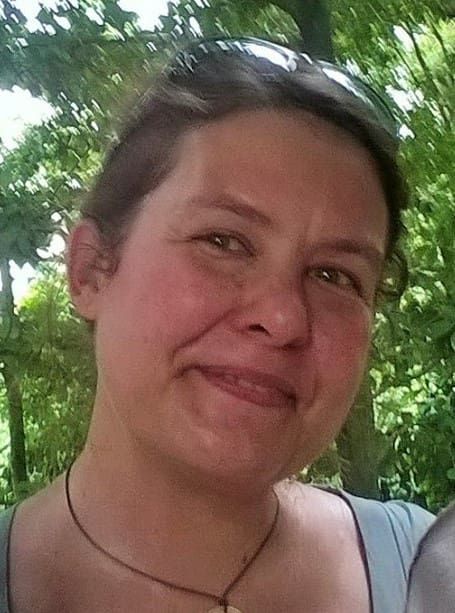
 Today on International Women’s Day we are celebrating all those women involved within the South African National Antarctic Programme (SANAP). International Women’s Day is celebrated on 8 March of each year. 2021 Theme: “IWD 2021 campaign theme: #ChooseToChallenge; A challenged world is an alert world. Individually, we are all responsible for our own thoughts and actions – all day, every day. We can all choose to seek out and celebrate women’s achievements. Collectively we can help create an inclusive world. From challenge comes change, so let’s all choose to challenge.”
Today on International Women’s Day we are celebrating all those women involved within the South African National Antarctic Programme (SANAP). International Women’s Day is celebrated on 8 March of each year. 2021 Theme: “IWD 2021 campaign theme: #ChooseToChallenge; A challenged world is an alert world. Individually, we are all responsible for our own thoughts and actions – all day, every day. We can all choose to seek out and celebrate women’s achievements. Collectively we can help create an inclusive world. From challenge comes change, so let’s all choose to challenge.”

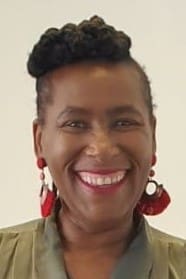
 Within SANAP, women take on many roles. Throughout SANAP we find women in leadership positions which we celebrate; the Minister of Environment, Forestry and Fisheries, Minister Babara Creecy, the Director at Knowledge Advancement and Support (KAS) of the National Research Foundation Tracy Klarenbeek, Deputy Directors Kusi Ngxabani and Chuma Phamoli. (Above l-r: Min Creecy, Tracy Klarenbeek, ChumaPhamoli, Kusi Ngxabani)
Within SANAP, women take on many roles. Throughout SANAP we find women in leadership positions which we celebrate; the Minister of Environment, Forestry and Fisheries, Minister Babara Creecy, the Director at Knowledge Advancement and Support (KAS) of the National Research Foundation Tracy Klarenbeek, Deputy Directors Kusi Ngxabani and Chuma Phamoli. (Above l-r: Min Creecy, Tracy Klarenbeek, ChumaPhamoli, Kusi Ngxabani)
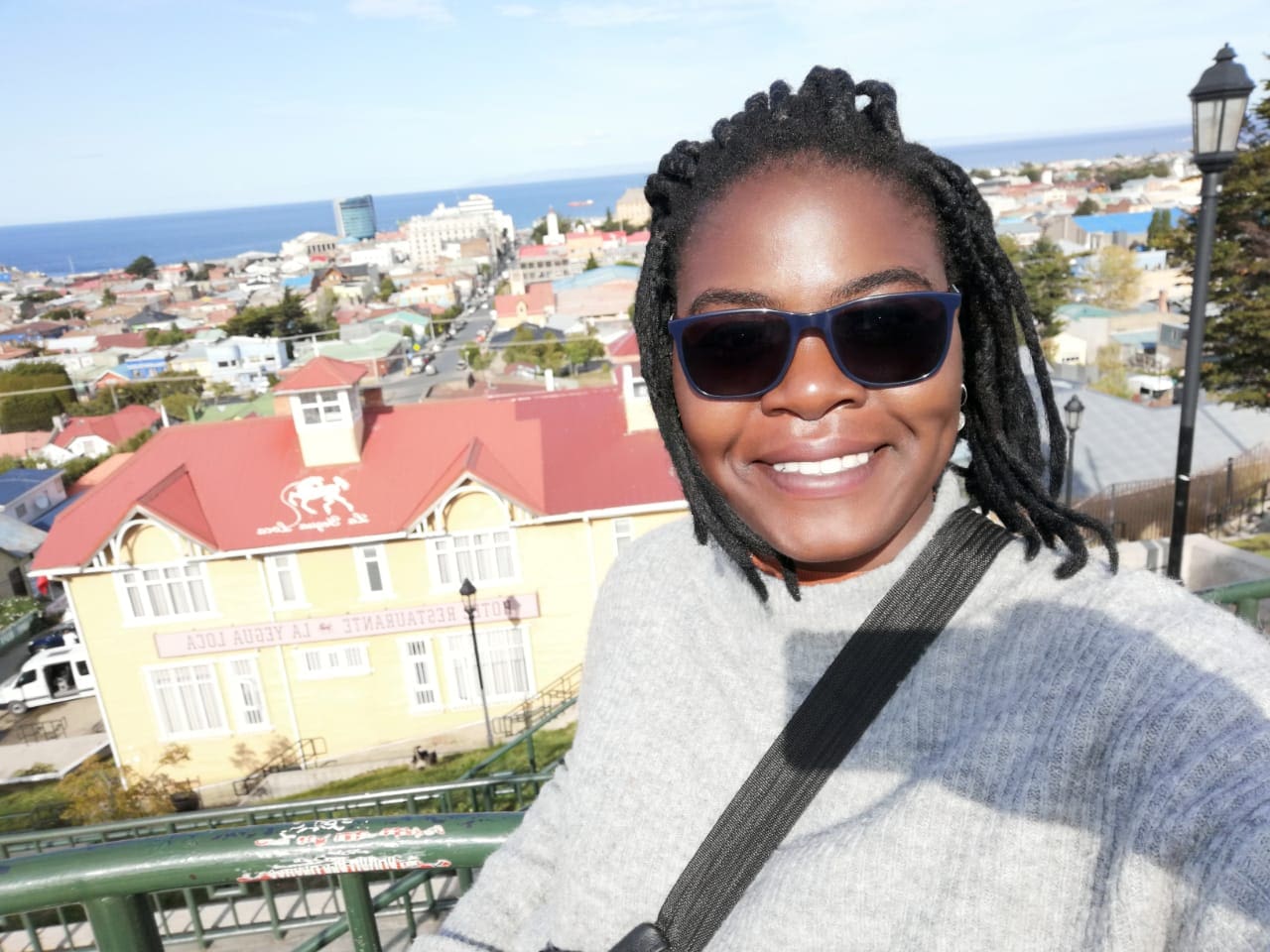 In the science environment there are many Principal Investigators and the chair for the National Committee of SCAR, Bettine van Vuuren(left). The Champion for the Antarctic Youth Coalition for Antarctic Gateway Cities is Rudzani Silima(right). There have been several students and other women over the past years within SANAP. See slideshow on ALSA Archive and Womens day 2020 on www.sanap.ac.za
In the science environment there are many Principal Investigators and the chair for the National Committee of SCAR, Bettine van Vuuren(left). The Champion for the Antarctic Youth Coalition for Antarctic Gateway Cities is Rudzani Silima(right). There have been several students and other women over the past years within SANAP. See slideshow on ALSA Archive and Womens day 2020 on www.sanap.ac.za
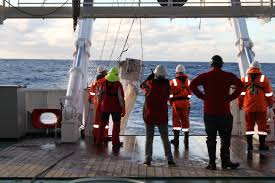
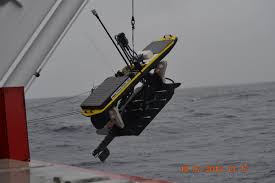 This year the vessel entered notable ice cover at 67° 50′ S. It was mostly easy going with some ramming during the early hours of 4 January. The later departure of the SA Agulhas II has resulted in ice navigation later in the summer. The ice is more depleted by now and navigation has been more straight forward.
This year the vessel entered notable ice cover at 67° 50′ S. It was mostly easy going with some ramming during the early hours of 4 January. The later departure of the SA Agulhas II has resulted in ice navigation later in the summer. The ice is more depleted by now and navigation has been more straight forward.

 The ship enters notable sea ice on the morning of 3 January. Here the ice floes are about 10 m in diameter and concentrated at about 80% with some snow cover and only a few centimeters of ice thickness. (In our science we also visually observe the ice and our ‘data’ may vary due to subjective opinion – Do you agree?).
The ship enters notable sea ice on the morning of 3 January. Here the ice floes are about 10 m in diameter and concentrated at about 80% with some snow cover and only a few centimeters of ice thickness. (In our science we also visually observe the ice and our ‘data’ may vary due to subjective opinion – Do you agree?).

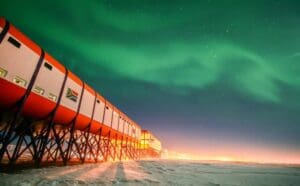 SANAE 60 departed on 25 December at 22:20 from Cape Town harbour to Antarctica.
SANAE 60 departed on 25 December at 22:20 from Cape Town harbour to Antarctica.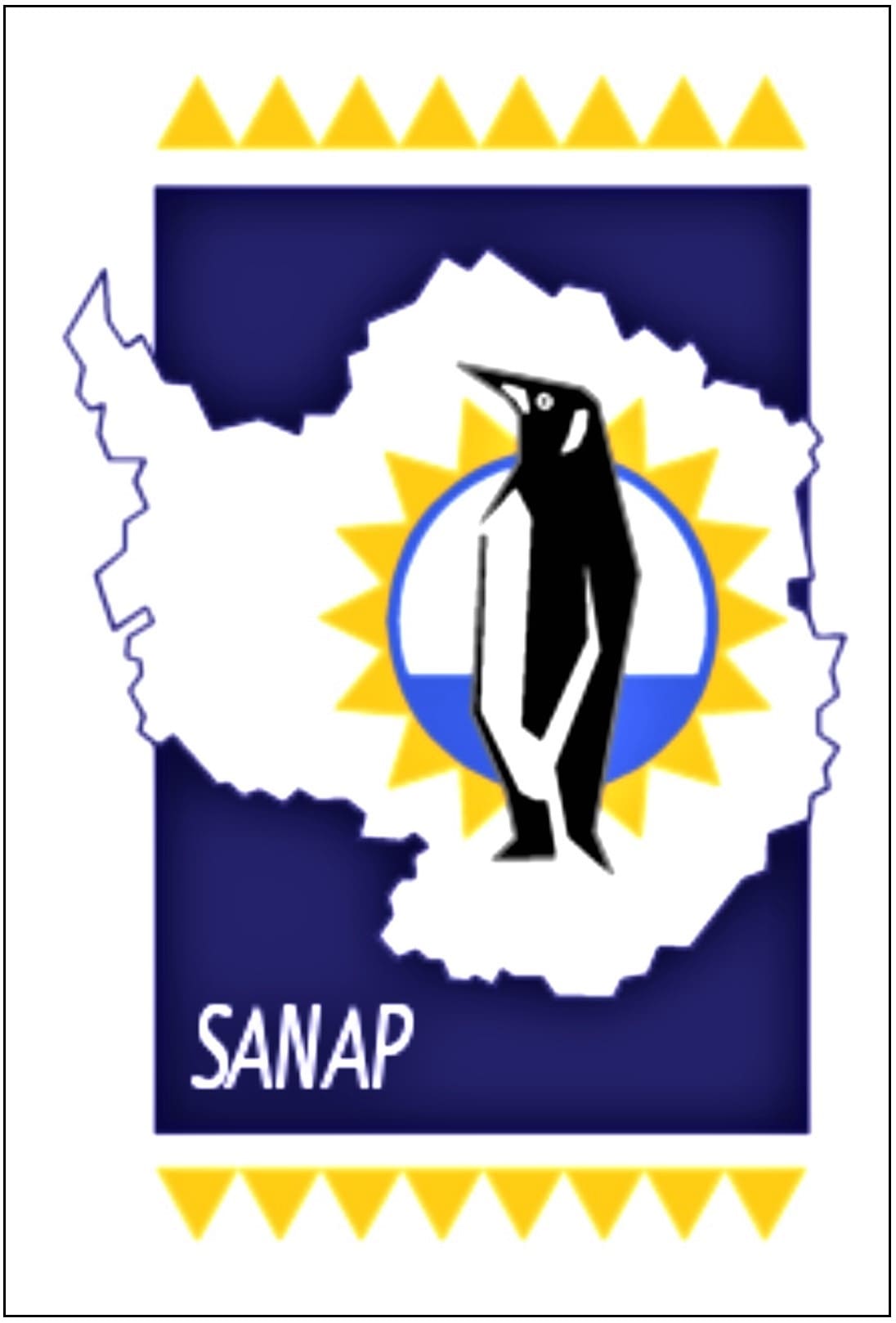

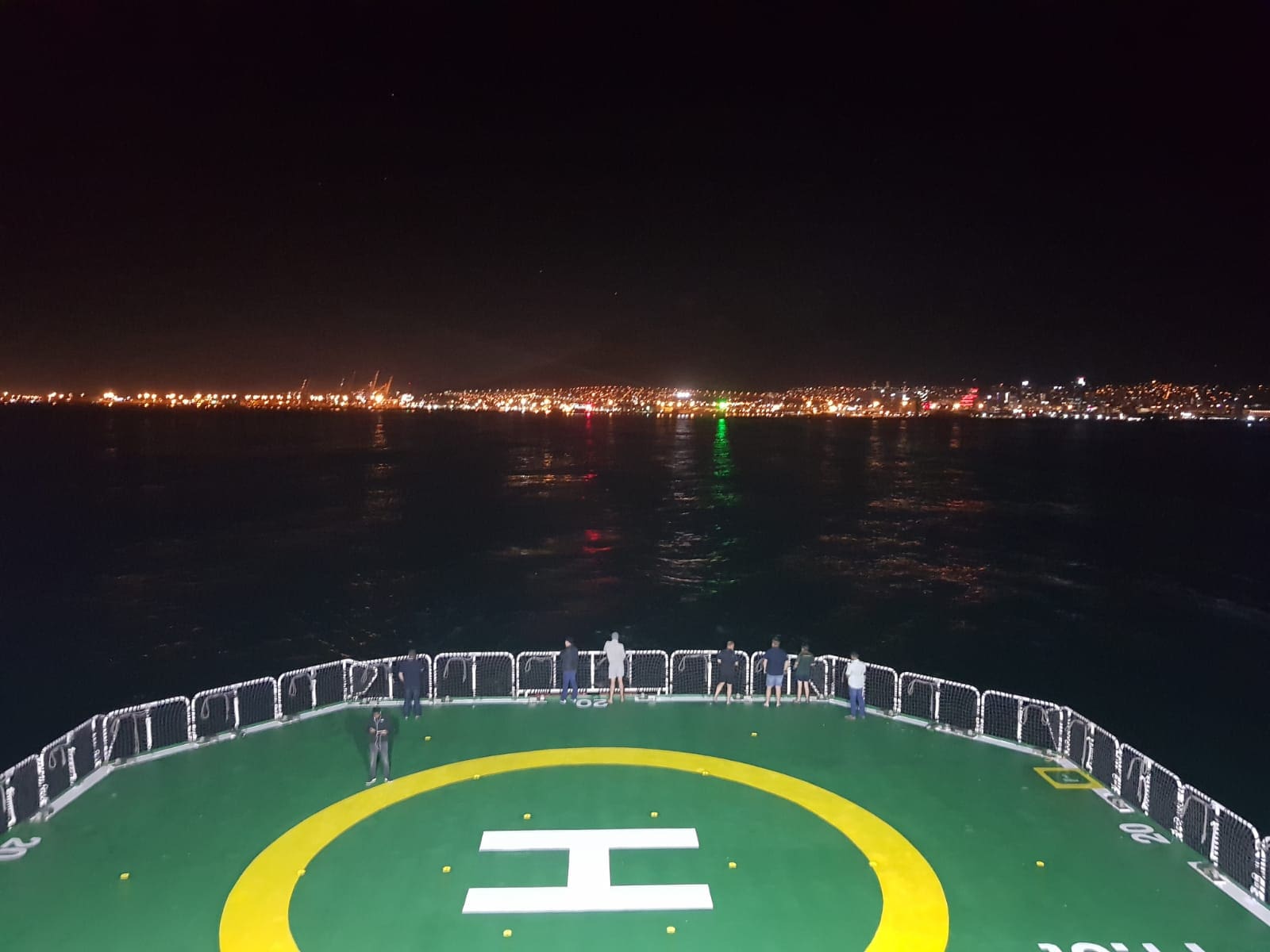 Cover Image:
Cover Image:
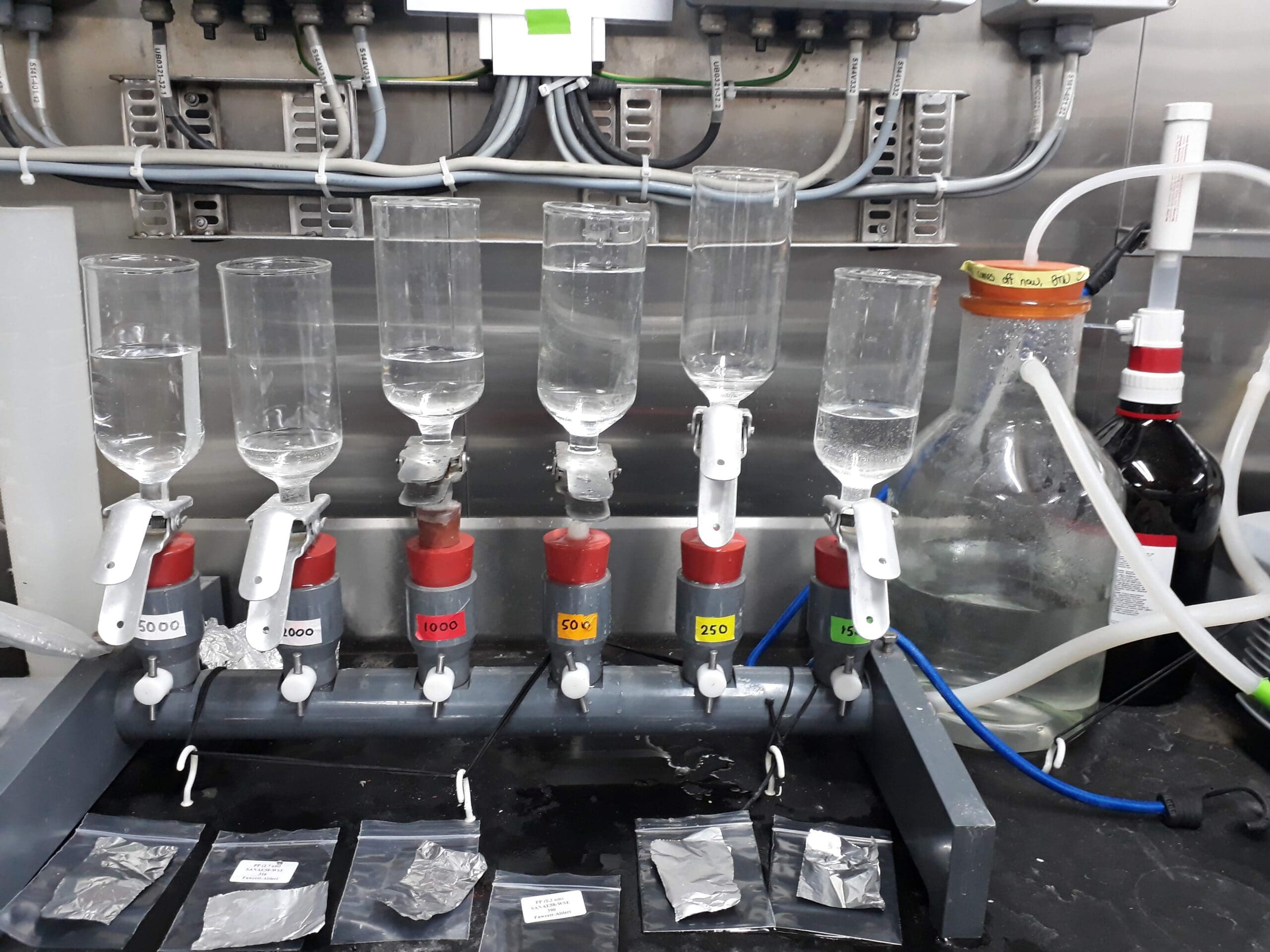
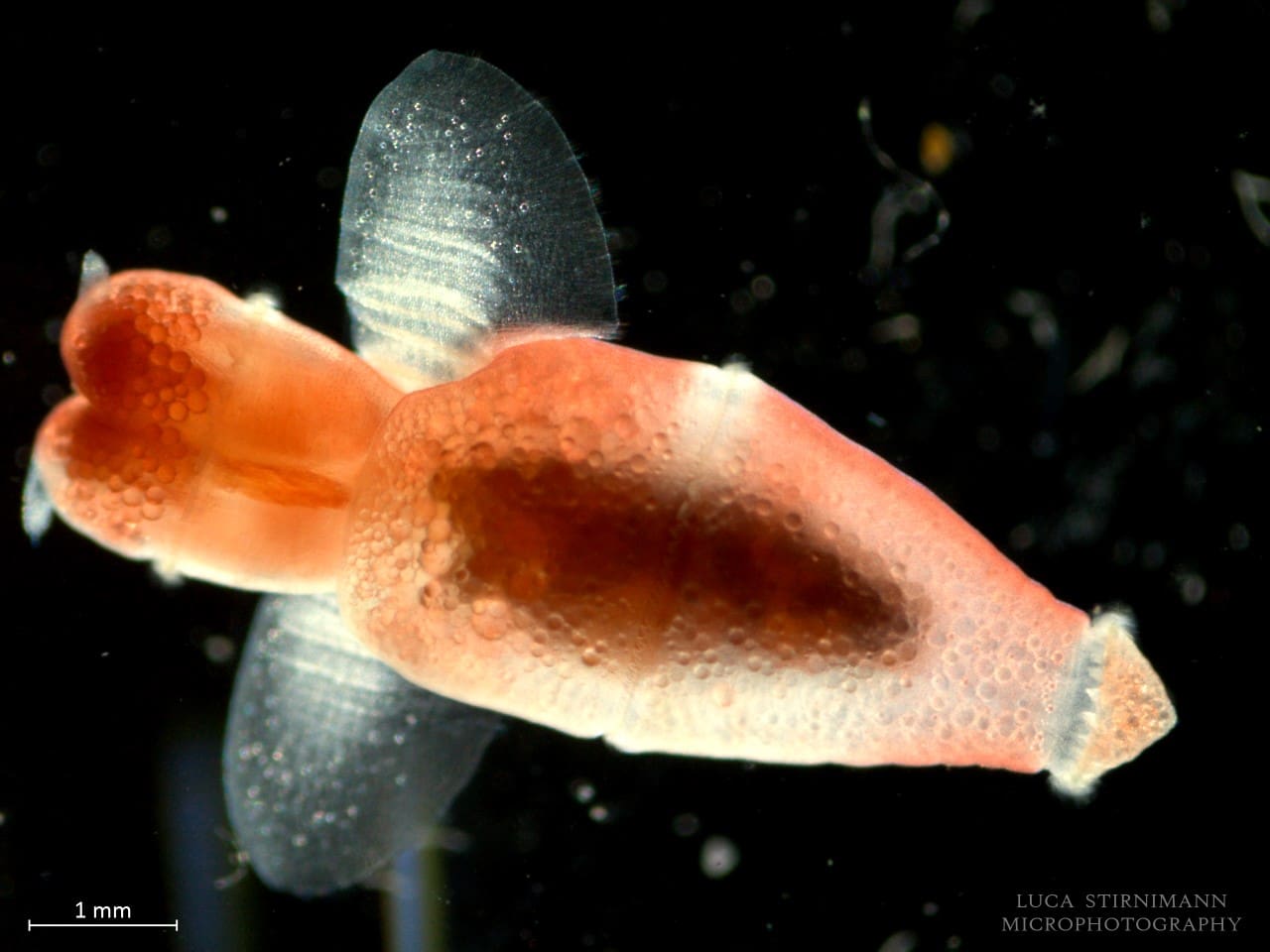
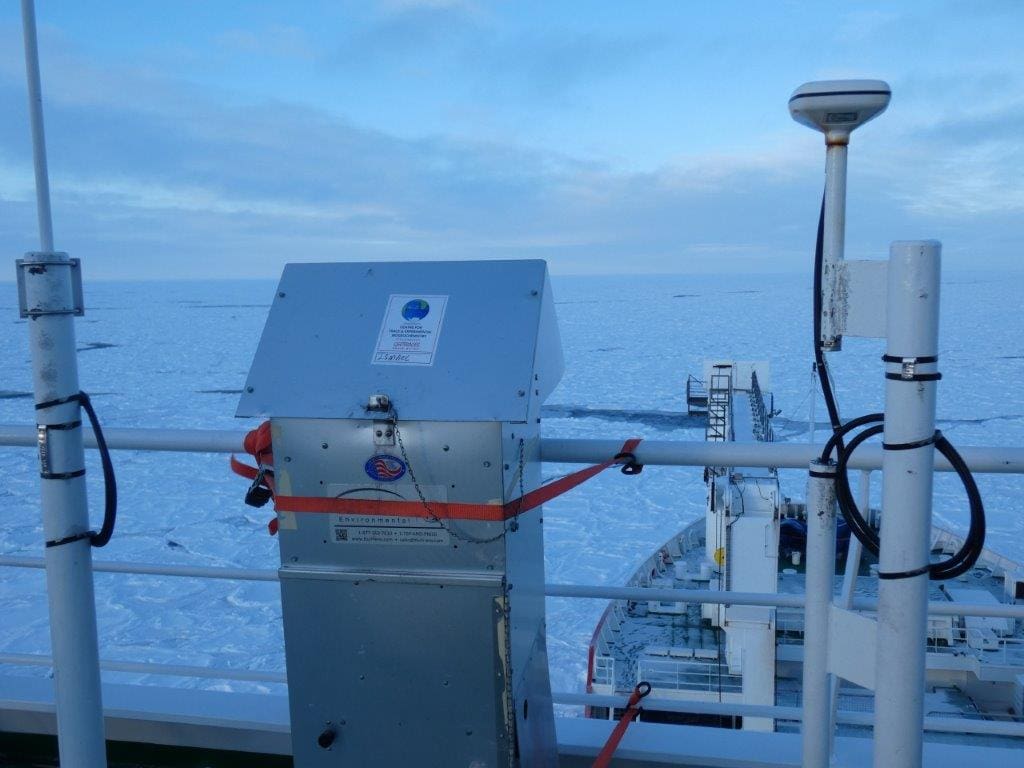 BIOGRIP comprises four research ‘nodes’ based at the Universities of Cape Town (focusing on isotope biogeochemistry), Stellenbosch (water and soil biogeochemistry), Free State (mineral biogeochemistry) and North-West University (atmospheric biogeochemistry), with the administrative ‘hub’ located at UCT. The
BIOGRIP comprises four research ‘nodes’ based at the Universities of Cape Town (focusing on isotope biogeochemistry), Stellenbosch (water and soil biogeochemistry), Free State (mineral biogeochemistry) and North-West University (atmospheric biogeochemistry), with the administrative ‘hub’ located at UCT. The 
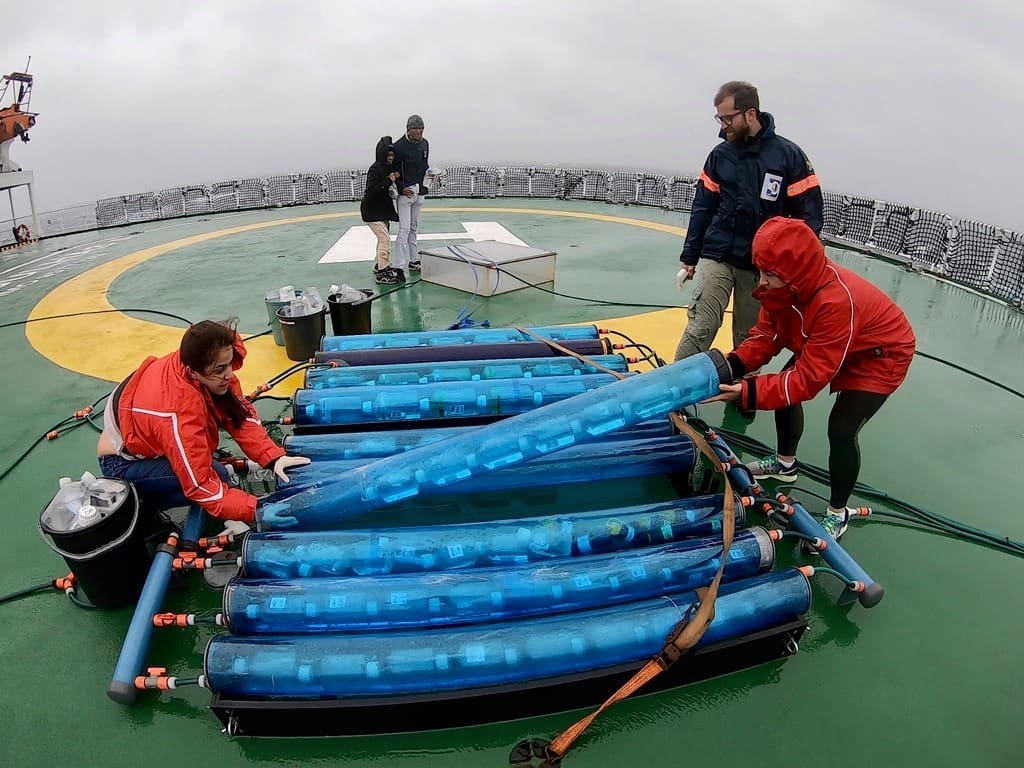
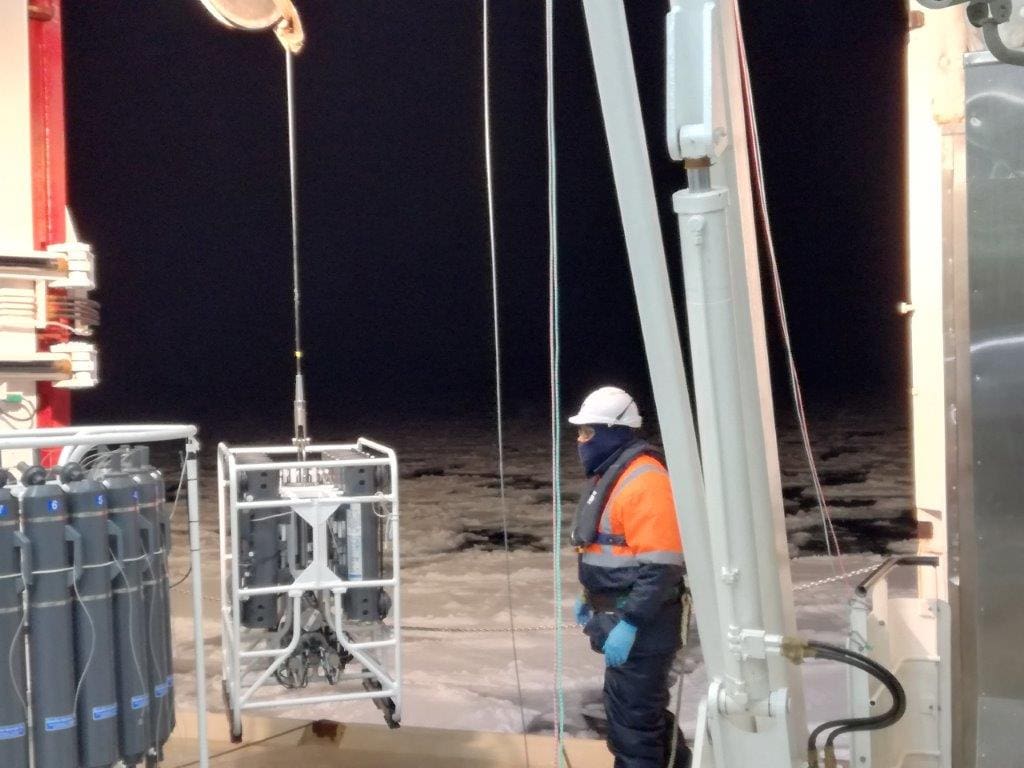 “Biogeochemistry” is the study of how biological, geological, chemical, and physical processes interact to shape natural environments over time and space. It covers a range of interdisciplinary research foci, from the origin and diversification of life, to how anthropogenic drivers alter modern environments, to the response of natural systems to environmental change. Biogeochemistry was identified by the 2016 South African Research Infrastructure Roadmap (SARIR) document as an emerging interdisciplinary field of strategic importance. SARIR recommends that the central objective of biogeochemical research in South Africa should be to gain “further insight into the interactions of human activity and the environment over the past several hundred millennia and to determine how the environmental impact of anthropogenic activity has contributed to the change in Earth system dynamics (chemical, physical and biological). This includes the search for an understanding of the behavior of well characterized and emerging pollutants and their current impact on the environment”. There are a number of strong research groups in South Africa already investigating various aspects of this broad research objective, but their efforts to-date have been isolated and/or fragmented. Moreover, biogeochemistry requires high precision data and measurements of a vast range of inorganic and organic chemical components, including isotope ratios and trace elements, some of which cannot currently be made in South Africa and many of which cannot be run at the volume and quality required. The investment in BIOGRIP will provide the platform to drive biogeochemical knowledge creation through investment in (1) technical capacity, training and scientific leadership in biogeochemical research, (2) world-class analytical facilities, and (3) improved monitoring of biogeochemical environmental variables through the generation and compilation of statistically meaningful datasets.
“Biogeochemistry” is the study of how biological, geological, chemical, and physical processes interact to shape natural environments over time and space. It covers a range of interdisciplinary research foci, from the origin and diversification of life, to how anthropogenic drivers alter modern environments, to the response of natural systems to environmental change. Biogeochemistry was identified by the 2016 South African Research Infrastructure Roadmap (SARIR) document as an emerging interdisciplinary field of strategic importance. SARIR recommends that the central objective of biogeochemical research in South Africa should be to gain “further insight into the interactions of human activity and the environment over the past several hundred millennia and to determine how the environmental impact of anthropogenic activity has contributed to the change in Earth system dynamics (chemical, physical and biological). This includes the search for an understanding of the behavior of well characterized and emerging pollutants and their current impact on the environment”. There are a number of strong research groups in South Africa already investigating various aspects of this broad research objective, but their efforts to-date have been isolated and/or fragmented. Moreover, biogeochemistry requires high precision data and measurements of a vast range of inorganic and organic chemical components, including isotope ratios and trace elements, some of which cannot currently be made in South Africa and many of which cannot be run at the volume and quality required. The investment in BIOGRIP will provide the platform to drive biogeochemical knowledge creation through investment in (1) technical capacity, training and scientific leadership in biogeochemical research, (2) world-class analytical facilities, and (3) improved monitoring of biogeochemical environmental variables through the generation and compilation of statistically meaningful datasets.

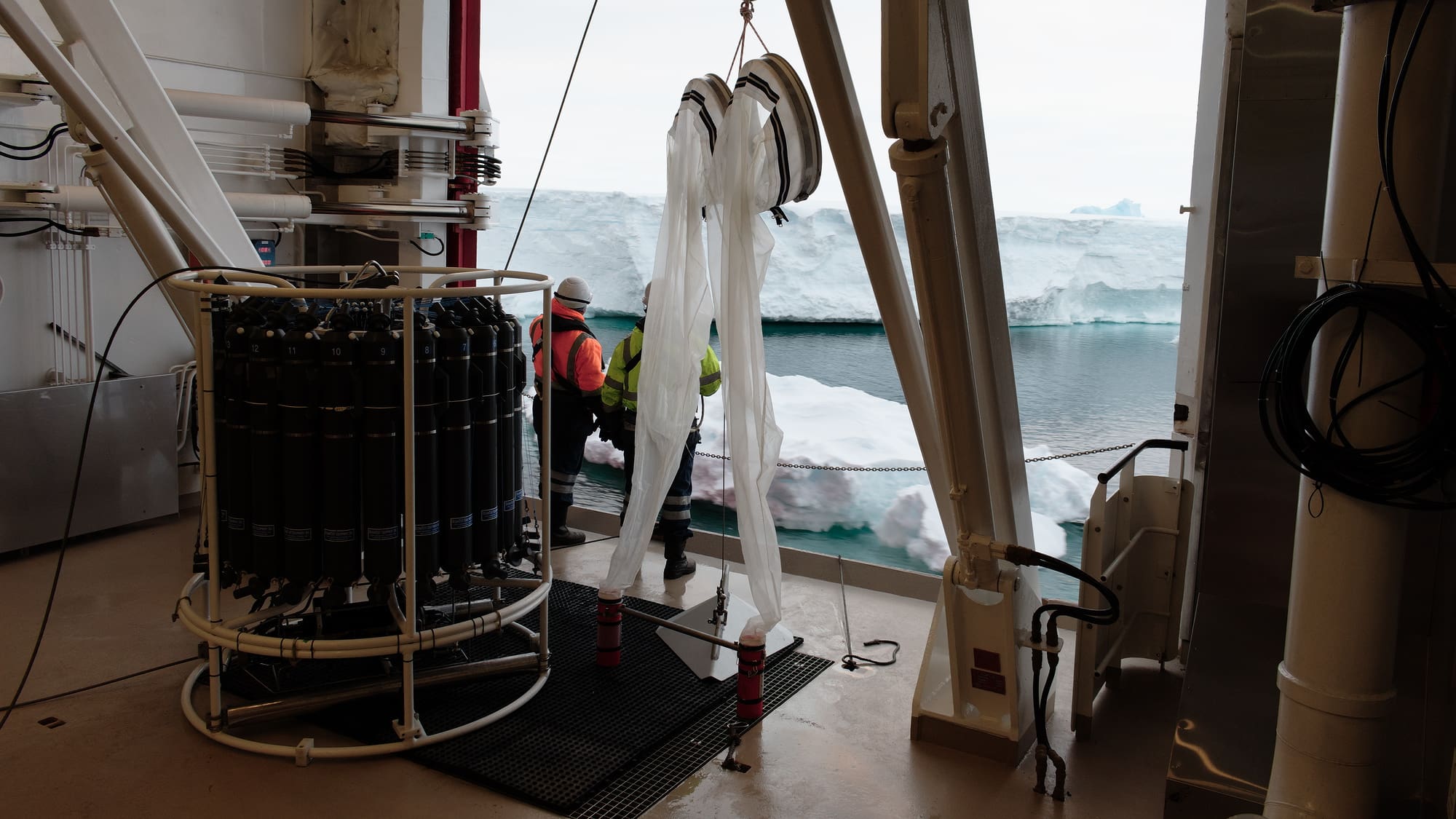 BIOGRIP will provide significant opportunities to advance South Africa’s research infrastructure and technical capacity in the field of biogeochemistry, while also facilitating a high level of scientific impact on a range of temporal and spatial scales. BIOGRIP will extend the practical research questions that address specific South African problems to include those that are purely curiosity-driven, creative, and/or risky, while also deepening the extent to which ongoing research themes can be probed. An additional impact of developing analytical capacity in-country is the potential for creative methods development, particularly South African-specific applications (e.g., for research questions relevant to the Cape floristic kingdom, hominin evolution, water availability and quality, Antarctic ecosystems, etc.). This will allow the South African research community to push the frontiers of knowledge in a variety of fields where biogeochemical techniques have yet to be applied (or have yet to be applied at the resolution offered by BIOGRIP).
BIOGRIP will provide significant opportunities to advance South Africa’s research infrastructure and technical capacity in the field of biogeochemistry, while also facilitating a high level of scientific impact on a range of temporal and spatial scales. BIOGRIP will extend the practical research questions that address specific South African problems to include those that are purely curiosity-driven, creative, and/or risky, while also deepening the extent to which ongoing research themes can be probed. An additional impact of developing analytical capacity in-country is the potential for creative methods development, particularly South African-specific applications (e.g., for research questions relevant to the Cape floristic kingdom, hominin evolution, water availability and quality, Antarctic ecosystems, etc.). This will allow the South African research community to push the frontiers of knowledge in a variety of fields where biogeochemical techniques have yet to be applied (or have yet to be applied at the resolution offered by BIOGRIP).